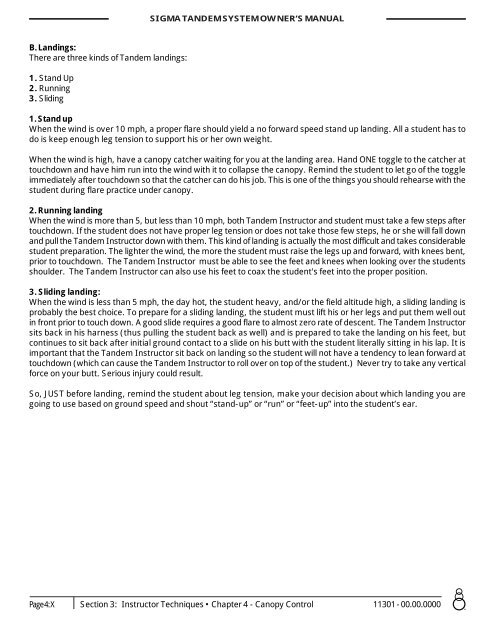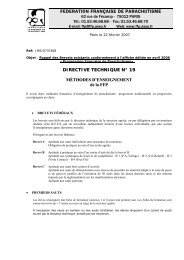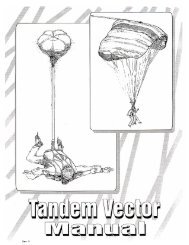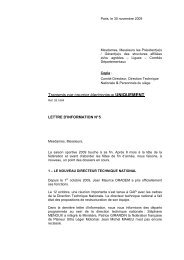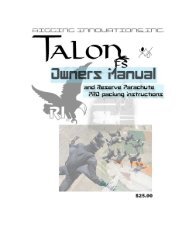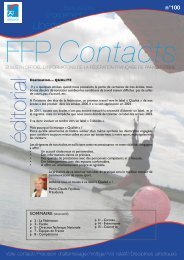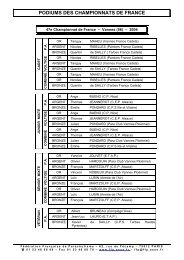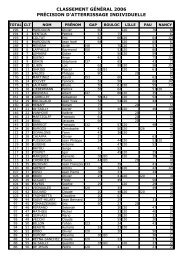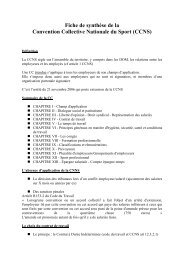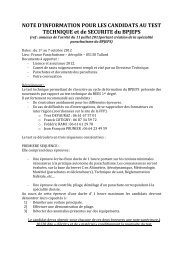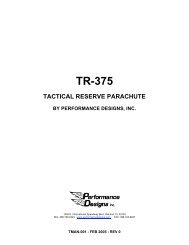tandem vector owner's manual
tandem vector owner's manual
tandem vector owner's manual
Create successful ePaper yourself
Turn your PDF publications into a flip-book with our unique Google optimized e-Paper software.
SIGMA TANDEM SYSTEM OWNER’S MANUAL<br />
B. Landings:<br />
There are three kinds of Tandem landings:<br />
1. Stand Up<br />
2. Running<br />
3. Sliding<br />
1. Stand up<br />
When the wind is over 10 mph, a proper flare should yield a no forward speed stand up landing. All a student has to<br />
do is keep enough leg tension to support his or her own weight.<br />
When the wind is high, have a canopy catcher waiting for you at the landing area. Hand ONE toggle to the catcher at<br />
touchdown and have him run into the wind with it to collapse the canopy. Remind the student to let go of the toggle<br />
immediately after touchdown so that the catcher can do his job. This is one of the things you should rehearse with the<br />
student during flare practice under canopy.<br />
2. Running landing<br />
When the wind is more than 5, but less than 10 mph, both Tandem Instructor and student must take a few steps after<br />
touchdown. If the student does not have proper leg tension or does not take those few steps, he or she will fall down<br />
and pull the Tandem Instructor down with them. This kind of landing is actually the most difficult and takes considerable<br />
student preparation. The lighter the wind, the more the student must raise the legs up and forward, with knees bent,<br />
prior to touchdown. The Tandem Instructor must be able to see the feet and knees when looking over the students<br />
shoulder. The Tandem Instructor can also use his feet to coax the student's feet into the proper position.<br />
3. Sliding landing:<br />
When the wind is less than 5 mph, the day hot, the student heavy, and/or the field altitude high, a sliding landing is<br />
probably the best choice. To prepare for a sliding landing, the student must lift his or her legs and put them well out<br />
in front prior to touch down. A good slide requires a good flare to almost zero rate of descent. The Tandem Instructor<br />
sits back in his harness (thus pulling the student back as well) and is prepared to take the landing on his feet, but<br />
continues to sit back after initial ground contact to a slide on his butt with the student literally sitting in his lap. It is<br />
important that the Tandem Instructor sit back on landing so the student will not have a tendency to lean forward at<br />
touchdown (which can cause the Tandem Instructor to roll over on top of the student.) Never try to take any vertical<br />
force on your butt. Serious injury could result.<br />
So, JUST before landing, remind the student about leg tension, make your decision about which landing you are<br />
going to use based on ground speed and shout “stand-up” or “run” or “feet-up” into the student’s ear.<br />
Page 4:X Section 3: Instructor Techniques • Chapter 4 - Canopy Control 11301 - 00.00.0000


